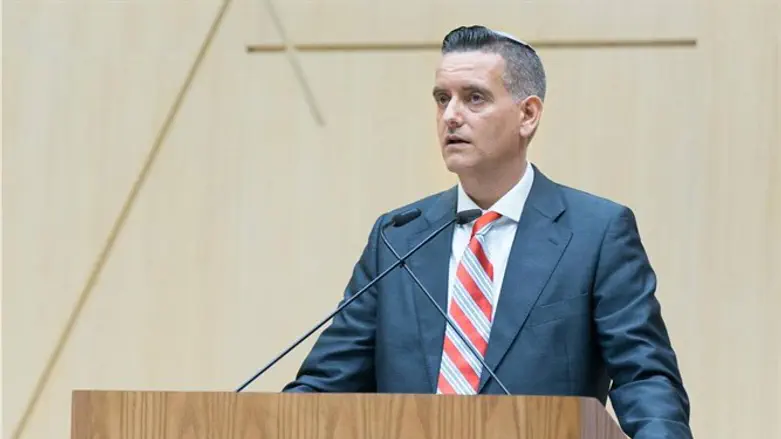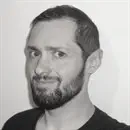
Last week, a report produced by a special committee within the Diaspora Affairs Ministry made headlines when it suggested that there are some 100 million people around the world with Jewish ancestry – the children of recent Jewish converts to other religions, or the descendants of Jewish communities forced to adopt other faiths.
The report, which recommended that Israel take steps to gather information on and reach out to people with Jewish ancestry, was met with skepticism and criticism in some quarters. Former Chief Rabbi of Hevron Dov Lior, a senior figure in the Religious Zionist movement, slammed the report for encouraging what he called “missionizing”, arguing that Israel should restrict its outreach efforts abroad to encouraging Aliyah among the eight million Jews in the Diaspora.
Others suggested the figures presented by the committee to be unrealistically high.
While Diaspora Affairs Minister Naftali Bennett (Jewish Home) has yet to rule on the committee’s recommendations, private organizations dedicated to helping these ‘lost Jews’ or ‘crypto-Jewish’ communities reconnect with their heritage celebrated the report for bringing attention to the subject.
The issue is a sensitive, complex one that has rarely received government attention, remaining largely the domain of private NGOs.
Prior to the destruction of the Second Temple in Jerusalem in 70 CE, the Jewish people numbered as many as four to four and a half million people according to some studies, or equivalent to nearly 10% of the entire Roman Empire. Some studies estimate the number of Jews in that period at as many as eight million.
As a result of a combination of persecution, forced conversions, and in some cases assimilation, the Jewish population would not return to its pre-exile peak of 4.5 million for more than 1700 years.
While much of the decline was caused by genocides and pogroms, a large portion can be attributed to forced conversions and assimilation.
Prime Minister Ariel Sharon’s chief of staff Dov Weissglas once mused that had the Destruction of the Second Temple and the exile not taken place, there would be at least 500 million Jews today, or perhaps as many as 800 million.
While this estimate may be unrealistic, some suggest the number of ‘lost Jews’ – people descended from Jews forced to convert – may in fact be in the hundreds of millions, far higher than the roughly 100 million suggested by the Diaspora Affairs Ministry report.
Ashley Perry, President of the Reconectar organization, says that just the descendants of Iberian Jews forced to convert alone likely numbers over 100 million
Once the largest Jewish community in the world, most of the Jews of Spain and Portugal were forced to adopt Catholicism, with a minority fleeing the peninsula.
While many of the Spanish and Portuguese Jews forced to convert (Anusim, or ‘Forced Ones’) maintained their Judaism covertly for centuries, the knowledge of their Jewish heritage often faded with the passing generations, leaving only family traditions with distant roots in Judaism.
Perry, who immigrated to Israel from the UK and served as an adviser to an Israeli deputy premier and foreign minister, has taken up the cause of the ‘Bnei Anusim (Descendants of the Forced Ones). Perry serves both as the Director-General of the official Knesset Caucus for the Reconnection with the Descendants of Spanish and Portuguese Jewish Communities, and President of Reconectar, which helps descendants of Iberian ‘lost Jews’ reconnect with their heritage.
In an interview with Arutz Sheva, Perry said that the number of Bnei Anusim alone is 100 million, with some studies suggesting there are as many as 200 million descendants of Spanish and Iberian Jews.
“It is very difficult to gauge the number of people descended from the Jews of Spain and Portugal who were coerced to convert to Christianity or to practice their Judaism in secret.”
“There are different figures that have been suggested, based on studies of the number of Jews forced to convert to Christianity in Spain and Portugal going back to the 14th century. Given the birthrate over the years, studies have estimated the number of descendants of these Jews at anywhere from 100 million to 150 million and even some who claim there are as many as 200 million around the world descended from Spanish and Portuguese Jews. I like to follow the most conservative estimates and say that we are talking about at least 100 million people.”
While most of the ‘Bnei Anusim’ today live in the Americas, continued Perry, they can be found around the globe.
“These people today live all over the world. Obviously most live in Latin America, but there are many in the United States in Spain, Portugal, and in Southern Europe in countries like Italy. But many live outside of these areas, all across the globe in countries ranging from India to New Zealand. According to some studies, one in seven or as many as one in four Latinos living in the US has Jewish ancestry. In many countries across Central and South America there are many [people with Jewish ancestry], including in Brazil, where many Bnei Anusim settled.”
“Many Spanish names which are today common in Latin America were originally Jewish names, and show just how many descendants of the Anusim there are. My family name, for instance, Perez, comes from the Hebrew name Peretz, one of the tribes from Judah. Lopez is another such name, as is Hernandez. We’ve compiled a huge database of Spanish and Portuguese Jewish names.”
In recent years, there has been a surge in interest in Jewish ancestry among Bnei Anusim, sparked in part by greater access to DNA testing and information regarding family traditions rooted in Judaism – traditions which often were maintained long after a family’s Jewish identity had been forgotten.
“Today, more and more people are rediscovering their Jewish heritage and looking to reconnect with it – that’s why our organization is called ‘Reconectar’ from the Spanish and Portuguese word for ‘reconnect’. We’ve been contacted by tens of thousands and even hundreds of thousands of people around the world reaching out because they’re interested in reconnecting with their Jewish heritage.
“Some, on one extreme, want to become Jewish – convert to Judaism, observe Judaism, and in some cases even make Aliyah [immigrate] to Israel. On the other extreme, there are people who identify as Christians – Catholics, Evangelicals, or other Christian denominations – and want to remain as such, but are interested in learning about their Jewish background. We have no interest in missionizing – that’s not our goal. We want to provide people with the chance to reconnect with their heritage in the way that they see fit.
“Some people always knew about their Jewish heritage. Others kept some Jewish traditions – traditions which over time were no longer understood. For instance, some people would observe “Esther’s Fast” – a practice which has its origins in the traditional Taanit Ester [Fast of Esther] observed by Jews ahead of Purim. Some people had family traditions of not eating pork, or of not mixing meat and milk. There are some who eat only flat [unleavened] bread or crackers in the spring around Easter time.
“Today with the internet, there is greater access than ever to information, allowing people to rediscover the origins of their family traditions. And with genetic testing, more and more people are able to verify their claims of Jewish heritage.
“This is a very exciting time. There is a huge amount of interest in this, with people all over the world looking to reconnect with their Jewish roots. We had one meeting – just a meeting – in the Knesset for the establishment of the parliamentary Caucus for the Reconnection with the Descendants of Spanish and Portuguese Jewish Communities, and people came from all over the world to attend. This was just a two-hour meeting, but we had people coming in from around the world because they were so excited about the concept. One person came all the way from New Zealand – a round trip of 48 hours – just for a two-hour event.”
